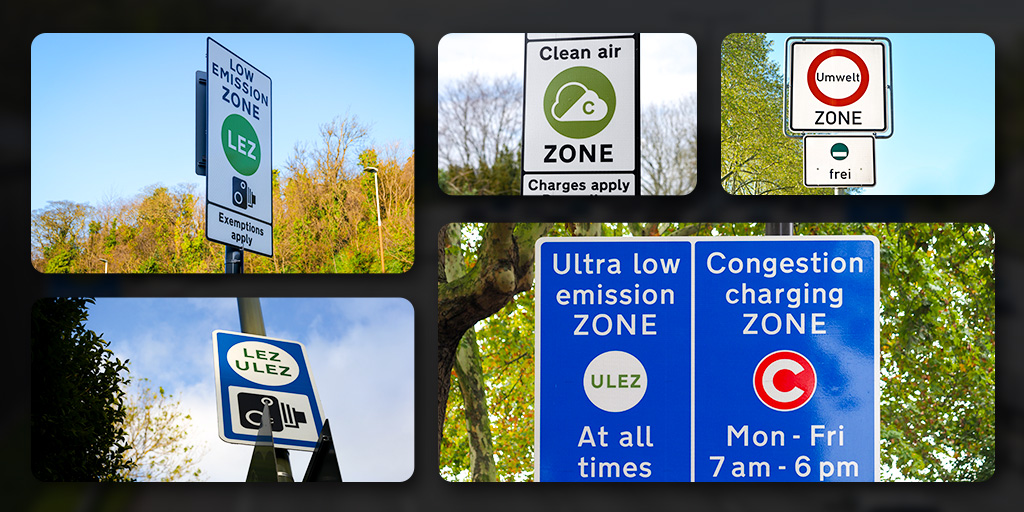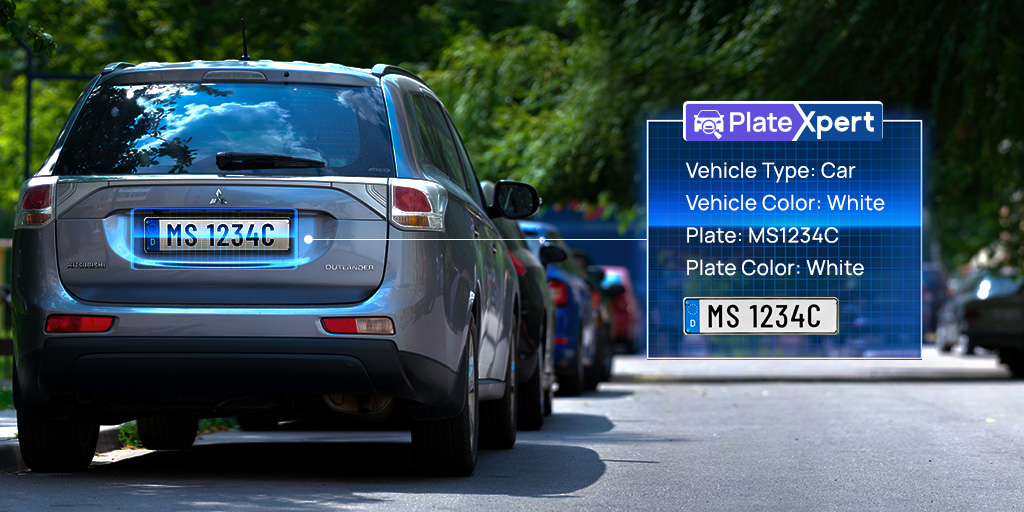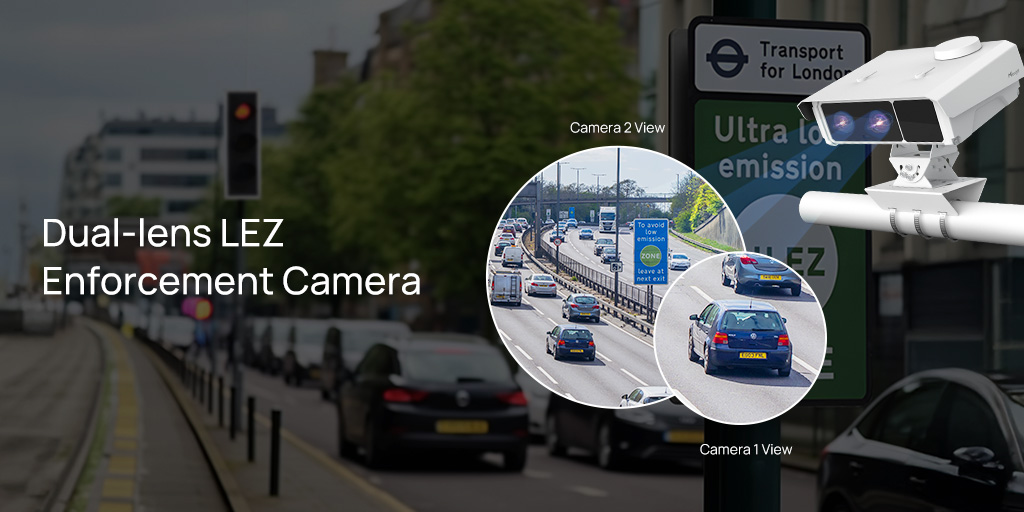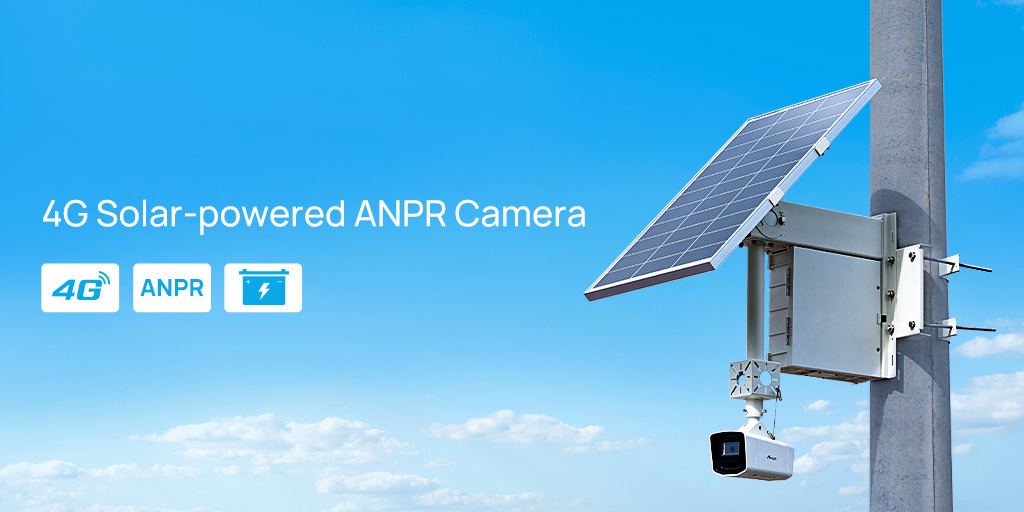ANPR-powered Low Emission Zone (LEZ) Cameras:
A Strategic Guide for Solution Providers

As urban centers worldwide grapple with escalating air pollution and traffic congestion, the adoption of Low Emission Zones (LEZs) has become an increasingly popular strategy to improve air quality and public health. Increasingly, countries are establishing LEZs to restrict or regulate high-polluting vehicles from entering sensitive areas, driven by stringent environmental policies and growing public demand for cleaner cities.
Advanced technologies such as Automatic Number Plate Recognition (ANPR) and License Plate Recognition (LPR) cameras have emerged as critical enablers of these zones, providing real-time vehicle identification and enforcement capabilities.
This blog will delve into the key concepts behind LEZs, explore the essential ANPR features for successful implementation, discuss common challenges, and highlight the environmental and urban benefits of LEZ systems.
Understanding Low Emission Zones (LEZs)
A Complete Guide to ULZE, LEZ, and LTZ: Definitions and Differences
Low Emission Zones (LEZs) are designated urban areas where vehicles must meet specific emissions standards to enter or travel without restrictions. These zones aim to reduce air pollution by limiting the presence of older, more polluting vehicles. Several variations of emission-based zones exist globally, each with slightly different definitions and regulatory scopes:
- Ultra Low Emission Zones (ULEZ or ULZE): Stricter versions of LEZs that impose more rigorous emissions requirements, often targeting near-zero emission vehicles such as electric or hydrogen cars.
- Low Emission Zones (LEZ): Zones that restrict or charge vehicles exceeding certain emission thresholds, generally focusing on diesel and older gasoline vehicles.
- Low Traffic Zones (LTZ): Areas that limit overall vehicle traffic, sometimes with exemptions for certain vehicles, but are less focused solely on emissions.
The legal framework for LEZs varies by country and region. Still, they typically involve governmental policies mandating vehicle emissions standards, supported by penalties for non-compliance, such as fines or entry bans. These regulations are often tied to broader climate and air quality goals.
The Global Rise of Low Emission Zones (LEZs)
Low Emission Zones have seen rapid expansion worldwide in recent years. European cities like London, Paris, Berlin, and Milan have been pioneers in establishing comprehensive LEZs and Ultra Low Emission Zones. Other regions, including parts of North America and Asia, have also begun adopting these measures, reflecting a global trend toward urban sustainability.
Different LEZ models exist to address local needs:
- Charge-based LEZs: Vehicles that do not meet emission standards must pay a daily or per-entry fee.
- Restriction-based LEZs: Certain high-emission vehicles are prohibited from entering the zone entirely.
- Hybrid models: Combining charges and restrictions based on vehicle type, time, or air quality conditions.
The deployment of these varied LEZ formats demonstrates the flexibility cities have to customize solutions while sharing the common goal of reducing harmful emissions in urban centers.

Critical ANPR Capabilities for Enforcing LEZ Regulations
ANPR cameras are the backbone technology enabling efficient enforcement of LEZ policies. ANPR technology capture vehicle license plates in real-time, converting images into data that can be cross-checked against databases to identify vehicles subject to LEZ rules.
The most important ANPR capabilities for LEZ enforcement include:
- License Plate Recognition Accuracy: The core function is precise and fast reading of vehicle plates under various lighting and weather conditions.
- Make and Model Recognition (MMR): Advanced ANPR systems integrate AI-powered vehicle identification beyond plates, recognizing the make, model, color, and even vehicle type. This multi-attribute recognition is vital for verifying compliance with emission standards that depend on vehicle classification.
- Database Integration and Real-Time Comparison: ANPR cameras connect to centralized databases containing vehicle registration and emission status, enabling instant decision-making on whether a vehicle is compliant or subject to penalties.
- On-Edge AI Processing: Processing data locally on the device reduces latency and bandwidth use, critical for real-time enforcement in zones with limited network coverage.
- AI Deep Learning: Utilization of AI algorithms improves recognition performance, especially in complex scenarios like partial occlusions, dirty plates, or multi-vehicle scenes.
- Global Data Standards (GDS): Support for international plate formats allows LEZ enforcement across different regions and vehicle origins.
Together, these technologies empower LEZ systems to function efficiently, accurately identifying non-compliant vehicles and facilitating enforcement actions such as automated fines or access restrictions.
Navigating Challenges: Key Considerations for LEZ Camera Implementation
Implementing an effective LEZ system with ANPR/LPR technology involves overcoming several key challenges:
- Data Privacy and Compliance:
- Adherence to privacy regulations like the General Data Protection Regulation (GDPR) is critical when capturing and processing vehicle and driver data.
- Ensuring secure storage, controlled access, and anonymization where required protects citizen privacy.
- Technical Infrastructure:
- Reliable 4G and 5G connectivity is essential for transmitting data between cameras and central enforcement systems.
- Edge computing capabilities mitigate network dependency but require sophisticated hardware.
- Installation Constraints:
- Cameras must be compact and aesthetically suitable for installation in sensitive or historic urban environments.
- Strategic placement is required to maximize coverage without blind spots.
- Environmental Factors:
- Cameras should maintain performance in varied weather conditions, including rain, fog, and low light.
- Power supply solutions (e.g., solar-powered units) can be advantageous in remote or challenging sites.
- Integration with Existing Systems:
- LEZ enforcement often needs to link with broader urban traffic management, tolling, and payment platforms.
- Compatibility and open API support facilitate seamless integration.
- Public Acceptance and Communication
- Transparent communication of LEZ rules and benefits helps gain public support.
- Clear signage and real-time alerts minimize inadvertent violations.
Addressing these considerations in the planning and deployment stages helps ensure LEZ projects meet regulatory objectives and operate smoothly.
Driving Low Emission Zone Success with Milesight ANPR Cameras
At Milesight, we believe that greener mobility calls for sharper vision and smarter technology. As Low Emission Zones (LEZ) expand across the globe, we see not only a policy shift - but a real opportunity to shape cleaner cities with responsible innovation.
So we asked ourselves: how can technology make LEZ enforcement more effective, sustainable, and effortless for cities? Our answer is a powerful duo of smart solutions:
Dual-lens LEZ Enforcement Camera - Dual-lens ANPR for Solid LEZ enforcement
- Dual-lens, Solid Proof: Captures both ANPR close-ups and wide-area overviews for solid, contextual evidence
- High-speed ANPR: Supports license plate detection at speeds up to 250 km/h
- Superior AI performance: Embedded with advanced AI chip and AI ISP for reliable results
- Exceptional accuracy: Achieves 99% capture rate and 98% plate recognition rate
- Wireless connectivity: Equipped with 4G LTE for real-time data transmission
- Precise geolocation: Integrated GPS enables accurate mapping of vehicle activity
4G Solar-powered ANPR Camera - Designed for zero-infrastructure, smart deployments
- Radar-triggered capture: Ensures vehicles are detected precisely as they enter the field of view
- AI-optimized imaging: Focuses intelligently for sharp plate capture
- Low power consumption: Ideal for continuous operation with minimal energy usage
- Solar-powered design: Sustainable energy source ensures 24/7 uptime without external wiring
- 4G LTE connectivity: Enables seamless, real-time transmission of enforcement data
- Protocol-ready: Supports MQTT & HTTP for easy integration with LEZ management platforms
- Effortless deployment: Lightweight and easy to mount on poles, signs, or roadside structures
For us, LEZ isn't just about compliance - it's about contributing to cities that breathe easier and move smarter. With Milesight's intelligent ANPR cameras, you're not just enforcing rules - you're enabling a cleaner future.
What Are Your Choices for Low Emission Zones Enforcement Cameras?
Implementing a Low Emission Zone (LEZ) is a bold move toward cleaner air and sustainable mobility - but choosing the right enforcement tools is just as critical. The good news? You’ve got options tailored to different urban needs and infrastructure conditions.
1. Fixed ANPR Cameras at Key Entry Points
For cities with clearly defined LEZ borders, fixed ANPR cameras offer a reliable, always-on solution. Installed at key entry points, these cameras automatically scan license plates and match them against emissions or compliance databases. Unauthorized or high-emission vehicles can be flagged instantly, ensuring only approved or eco-friendly vehicles gain access. It's like installing an invisible gate that filters traffic intelligently, 24/7.
2. Solar-powered, 4G-enabled ANPR Units for Flexible Deployment
Not every location has the luxury of permanent power or connectivity. That's where solar-powered ANPR cameras with built-in 4G come in. These self-sufficient units are ideal for temporary zones, pilot programs, or remote areas without existing infrastructure. With radar-triggered capture, AI-driven recognition, and wireless data transmission, they're quick to deploy, easy to relocate, and don't compromise on performance. Think of them as agile guardians of clean air - ready to operate wherever enforcement is needed most.
Benefits & Impact of LPR/ANPR-based LEZ
Environmental & Public Health Improvements
By restricting access to high-emission vehicles, LEZs contribute significantly to reducing airborne pollutants such as nitrogen oxides (NOx), particulate matter (PM2.5 and PM10), and carbon dioxide (CO2). These improvements help combat smog formation, reduce respiratory illnesses, and support global climate goals.
The use of ANPR technology enhances enforcement accuracy, ensuring that only compliant vehicles circulate in the zone and amplifying the environmental impact of LEZ policies. Over time, this leads to cleaner urban air and healthier populations.
Support for Smart City Objectives: Efficient Traffic Management
Beyond emissions reduction, LEZ cameras provide valuable data to optimize traffic flow and urban planning. Real-time vehicle monitoring with ANPR cameras not only supports LEZ enforcement but also provides a wealth of additional data that can be leveraged for broader traffic management and smart city initiatives:
- Vehicle Flow and Congestion Detection:
- Continuously track the number of vehicles passing through specific routes to identify traffic bottlenecks and peak congestion times.
- Traffic Violation Detection:
- Identify violations such as speeding, red-light running, illegal turns, and unauthorized lane usage to enhance road safety.
- Vehicle Type Classification:
- Distinguish between private cars, taxis, trucks, buses, and motorcycles to inform policy decisions such as freight restrictions or public transport prioritization.
- Illegal Entry and Zone Intrusion Monitoring:
- Detect unauthorized vehicles in restricted zones such as pedestrian-only areas, school zones, or residential streets.
- Real-time Parking Enforcement:
- Monitor on-street parking spaces and enforce time limits or no-parking zones, reducing illegal parking and improving urban accessibility.
- Stolen Vehicle Detection:
- Instantly match plates against hotlists or police databases to identify stolen or wanted vehicles.
- Environmental Data Correlation:
- When combined with air quality sensors, ANPR data helps correlate traffic patterns with pollution levels, informing dynamic LEZ policies or green routing.
- Public Transport Lane Monitoring:
- Ensure only authorized buses or taxis use designated lanes, maintaining the efficiency of public transport corridors.
- Event and Emergency Management:
- Assist in rerouting traffic during major public events, accidents, or emergencies by identifying congestion or vehicle build-up in real time.
Data-Driven Insights for Smarter LEZ Policies
ANPR and LPR cameras generate rich datasets that help policymakers analyze traffic patterns, compliance rates, and environmental outcomes. This data supports continuous improvement of LEZ rules, targeted enforcement, and dynamic management such as adjusting charges or restrictions based on air quality metrics.
Leveraging data-driven insights empowers cities to balance environmental goals with mobility needs effectively.
Conclusion: Paving the Way for Smarter, Healthier Cities with LEZ Cameras
Low Emission Zones represent a pivotal step toward sustainable urban living, mitigating pollution and enhancing public health. ANPR-powered LEZ cameras form the technological backbone of these zones, enabling accurate, real-time enforcement and data collection that drive positive environmental and societal outcomes.
For solution providers, understanding the critical ANPR features, navigating implementation challenges, and communicating the multi-dimensional benefits of LEZs are essential to delivering impactful projects. As more cities worldwide commit to cleaner air and smarter traffic management, ANPR-enabled LEZ systems will remain at the forefront of urban innovation, paving the way for healthier, more livable cities.







